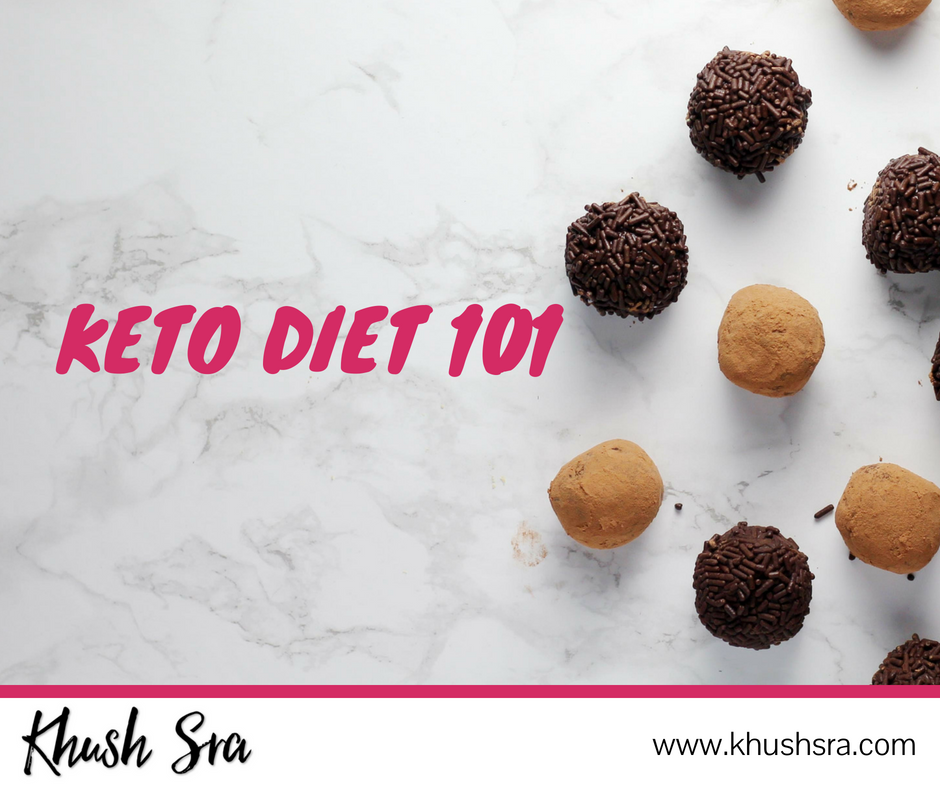You have heard it everywhere and the results are often shocking. But what it keto all about?
The ketogenic diet is a very low carb, very high-fat diet.
It has recently gained a lot of popularity in the wellness sphere because of some of its health benefits.
A ketogenic diet has been shown to help some people lose weight (yes, even with high fat). It can also help improve certain health conditions, like epilepsy in children.
Read on for some of the lowdown on how it reprograms your metabolism (for “ketosis”), and whether or not it’s something for you to consider.
What is “ketosis?”
Carbs (sugars & starches) are the preferred fuel for your brain and muscles. They use carbs first, whenever they’re available.
This is why maintaining stable blood sugar can affect your attention, mood, and energy level.
However, when very low amounts of carbs are available for fuel, your body starts making compounds known as “ketones.” These are your body’s “backup fuel.” And your body makes them from fat.
Ketogenic literally means “the generation of ketones.”
After a while being on a diet very low in carbs, your blood level of ketones increases. This is the metabolic state known as “ketosis.” It’s the same process that your body goes through if you’ve fasted for 72 hours and depleted your supply of carbs as fuel. That’s the trigger for turning fat into ketones.
Pro Tip: “Ketosis” from a ketogenic diet is not the same thing as the dangerous condition known as “ketoacidosis.”
Ketogenic diet for weight loss
With a high fat intake, it may be surprising to know that studies show that a ketogenic diet is effective for weight loss.
But it’s true!
It can also have better results than low-fat diets. At least one study showed that people lost 2.2 times more weight on a ketogenic diet than those on low-fat or calorie-controlled diets.
How is this possible?
Eating all that fat and protein is filling! It helps release satiety hormones that tell us that we’re full and satisfied, and we don’t need to eat anymore. Many people don’t need to count calories or track food intake, as they do with low-fat or calorie-controlled diets.
So, by eating enough fat and protein to go into “ketosis,” you can actually feel fuller and eat less food overall. Of course, this can help with weight loss.
Ketogenic diet for improved health
Some studies show other health benefits of the ketogenic diet.
As you can imagine, having very low levels of carbs can help reduce blood sugar and insulin issues.
One study showed improved blood triglycerides (fat) and cholesterol numbers. Others show lower blood sugar levels, and even up to 75% improvement in insulin sensitivity.
Several studies show reduced seizures in children who follow a ketogenic diet.
Changing your metabolism has widespread health effects. And this can be beneficial for some people.
How to do the ketogenic diet
Not everyone should go on a ketogenic diet. Make sure you speak with a trained healthcare practitioner before you try it. It can have side effects, including the infamous “keto flu.” These can be overcome quickly with some tricks including taking your minerals daily!
The ketogenic diet involves getting 60-75% of your calories from fat, 20-35% from protein, and just 5% from carbs. Many people find it quite restrictive and are unable to stay on it for a long time. It is often used as a reset for blood sugars, weight loss and several brain/mental health issues – and coming off gradually is key.
The foods to focus on for a ketogenic diet are meat, fatty fish, eggs, nuts, seeds, healthy oils, avocados, and low-carb vegetables (cucumber, celery, peppers, zucchini, leafy greens, etc.).
The main thing to avoid are foods that are high in carbs. These include sugary foods and desserts, grains, fruit, legumes, starchy vegetables, alcohol and “diet foods.” Not a bad thing at all, even if you don’t go fully keto.
And because of the limits on fruit and starchy vegetables, many people on the ketogenic diet need to take supplements. This is because, in addition to their sugar and starch, fruits and starchy veggies are a great source of vitamins, minerals, and phytonutrients. So, if you’re cutting those foods out, you still need to give your body those nutrients. And often, it means needing supplements.
But going keto doesn’t mean avoiding vegetables – not at all. Having salads daily with leafy greens, and non-starchy vegetables are important to keep it a clean keto. I also limit dairy in my keto plans as that doesn’t sit well with most, except the odd cheese or yogurt serving to keep in the macros.
And don’t forget your vitamins. Email me if you are interested in
Conclusion
The ketogenic diet is very popular these days. It can be helpful for weight loss, and other health conditions.
It’s not for everyone, so make sure you check with a knowledgeable practitioner before you begin.
JOIN THE 21 DAY KETO CHALLENGE!! (Lose or get your money back)
Recipe (Ketogenic): Layered chocolate peppermint fat bombs
Serves 6
- ½ cup coconut oil, melted
- 1 tbsp granulated sweetener (xylitol or monk fruit)
- ¼ tsp peppermint extract
- 2 tbsp cocoa powder, unsweetened
Instructions:
Mix the melted coconut oil with the sweetener and peppermint extract.
Pour half the mixture into six cubes of an ice cube tray. This is going to be the white bottom layer. Place the tray in the fridge to harden.
Add the cocoa powder to the remaining mixture and mix. This is going to be the top brown layer. Pour it on top of the white layer which has set in the fridge.
Place the ice cube tray into the fridge until completely hardened.
Serve & enjoy!
Tip: These are (high fat) super-rich desserts. Don’t eat too many if you’re not going full keto.
References:
http://www.precisionnutrition.com/ketogenic-diet
https://authoritynutrition.com/ketogenic-diet-101/
http://neurotrition.ca/blog/going-keto-what-science-saying-3-safe-ways-do-it

